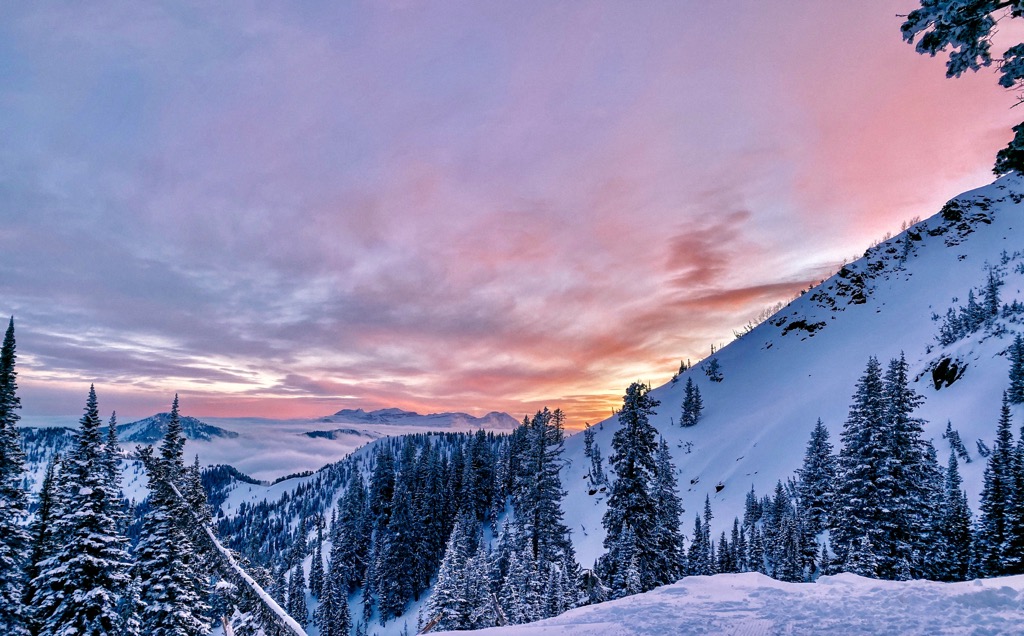Get PeakVisor App
Sign In
Search by GPS coordinates
- Latitude
- ° ' ''
- Longitude
- ° ' ''
- Units of Length
- Temperature

Yes
Cancel
Share ×

Scan the QR code and open PeakVisor on your phone
❤ Wishlist ×
Choose
Delete
Park City Mountain Resort (PCMR) is an old mining town turned destination resort in Park City, Utah. It is the largest destination resort in the United States and has been run by Vail Resorts as of 2014. It is located in Summit County, Utah, in the north of the state (don’t confuse it with the namesake country in Colorado) in the Western Rocky Mountains. PCMR reaches 10,026 feet (3,056 m), with a 3,126-foot (953 m) vertical rise from Park City at 6,900 feet (2,103 m). The main feature of PCMR is its size — it has more than 155 mi (250 km) of slopes and more than 35 ski lifts. The ski area is best suitable for intermediate and advanced skiers, and the most common type of ski lift is a chairlift. The PCMR season is from mid-November to early April in general.
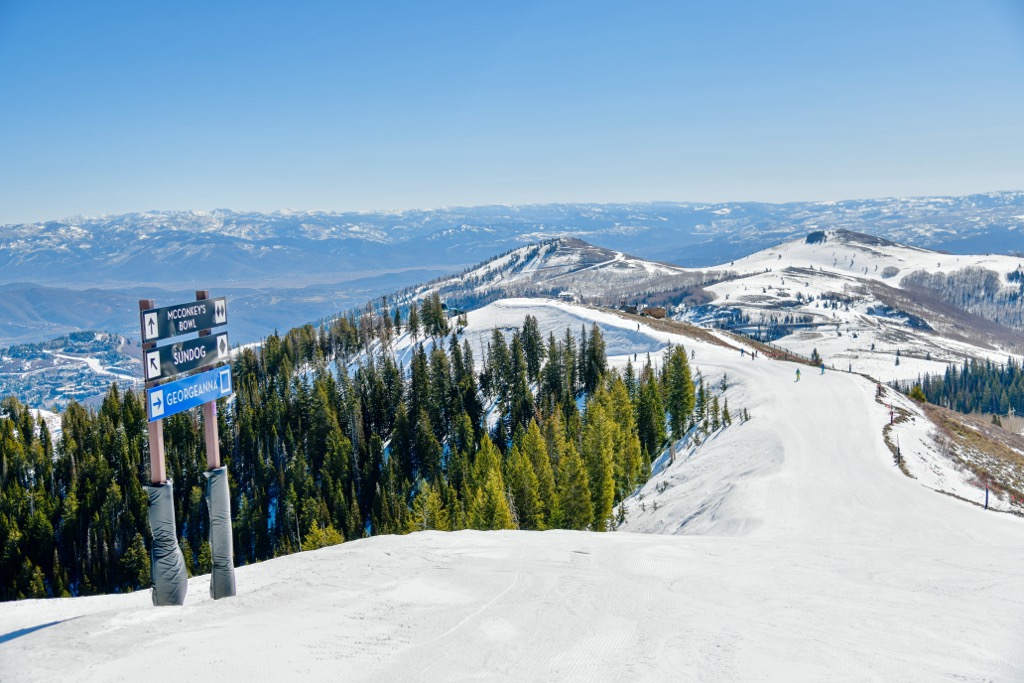
Park City was once a run-down mining town. In 1954, the population of Park City declined as the mining industry closed for business. Nevertheless, Park City emerged as a success story of the Rockies through the United Park City Mine Company’s transition from mining to ski lift and mountain access operations. The town is now one of the wealthiest places in the United States.
Park City is a city in Summit County, and Park City Mountain Resort is on the Wasatch Back of the Rockies, partly in both Summit and Wasatch Counties. The resort is southeast of Salt Lake City, the capital of Utah, and is on the east side of the Wasatch Range in the Rocky Mountains. PCMR is just a stone’s throw away from the resorts of Big Cottonwood Canyon (Brighton and Solitude).
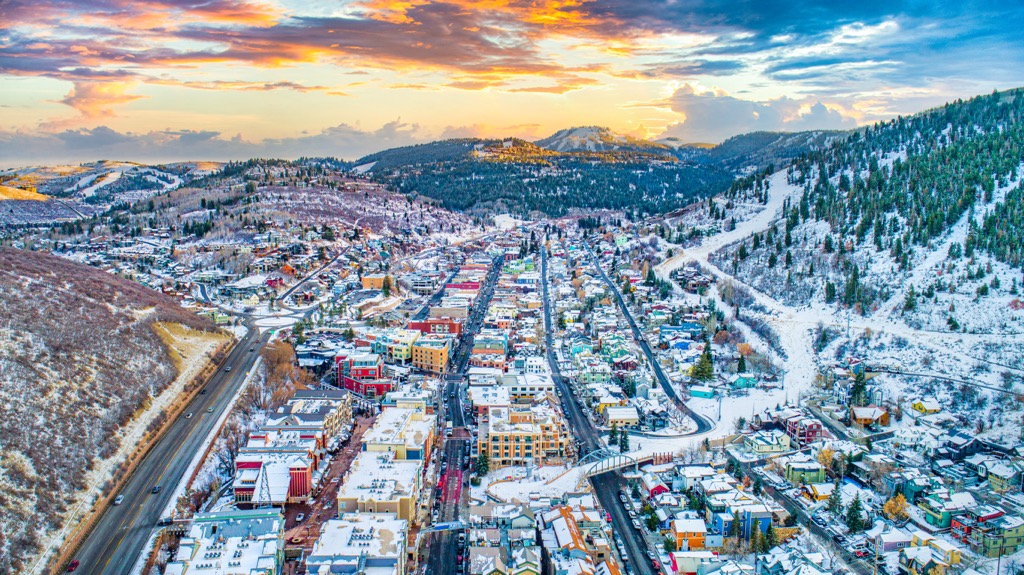
The Rocky Mountains formed 80 million years ago in the Laramide orogeny of the Late Cretaceous. They morphed into place by tectonic plates along the continental divide during the superactive breakdown of the ancient basin into reactive, pressured reformation. The orogeny amounted to enormous ranges of plateaus, intermontane basins, peaks, summits, and valleys. As a result, these peaks stretch from New Mexico to the borders of British Columbia, Yukon, and Northwest Territories.
Park City is straightforward to get to from almost anywhere in the world. Salt Lake City International Airport is 43 minutes PCMR, and it’s not difficult to find direct flights to this busy crossroads. Because Salt Lake City is such an isolated city, flying is the best option for most folks living outside of Utah.
Renting a car or finding a shuttle service from SLC airport is simple. If you are driving yourself from SLC, take I-80 east through Kimball Junction, then South - 224 onto Park Avenue. Alternatively, take South - 189, then East - 248 to 224.
The parking lots at Park City Mountain Resort are called First Time, Main, and Silver King. It costs $25 per car in advance by reservation. Mountain Village Garage reservations are $40 per vehicle. After 1 p.m., all service parking is free, and no reservations are required. Parking is free during the early and late seasons, generally at the beginning of December and April. Free Parking is still available all year at Canyons Village and High-Valley-Transit-Park-n-Ride. The parking situation can be complicated - there is a lot of fine print. Fortunately, you can find all the information you need here.
If you stay at the resort without a car or want to avoid the hassle of driving around in this busy village, PCMR offers an efficient public transit system. Check out the map and schedule here. I highly suggest walking or taking the bus. Otherwise, driving around town is likely to be complicated - there is a lot of congestion on the small streets and very little free parking in the Park City center.
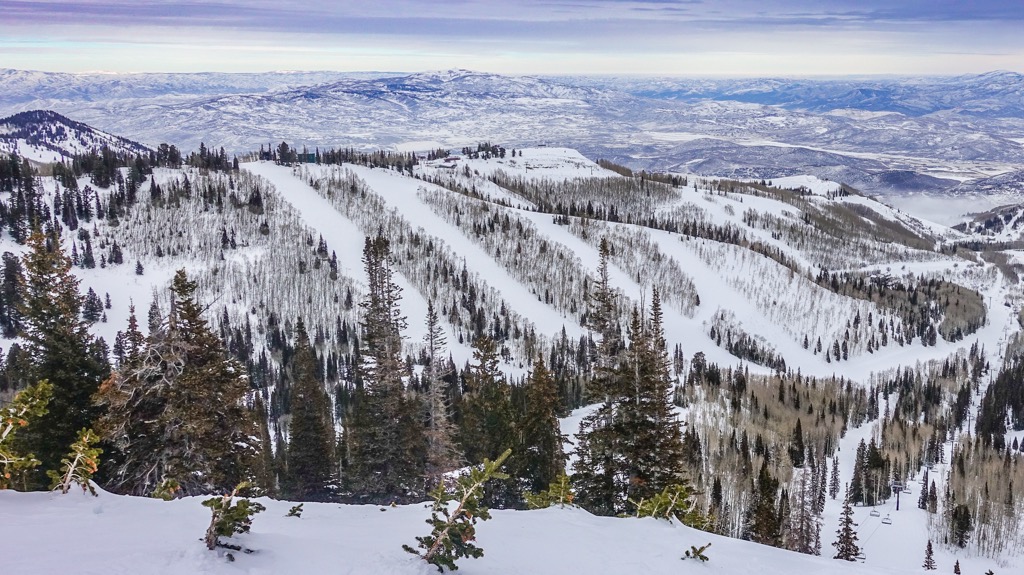
Park City Mountain Resort is typically open from late November to the end of April. However, these dates are condition-dependent. In low snow years, the resort can be forced to open late or close early.
Park City receives plentiful snowfall like most prominent resorts in the western half of the U.S. The resort reports an average of about 360 inches per year (9.14 m). Generally, when it’s not snowing, the sun is shining. Snowfall is the light, dry powder typical of Rocky Mountain resorts, and conditions are rarely icy.
The first meaningful snowfall in the mountains is usually in late August or September. These early storms melt away in a few hours or days. However, shady aspects begin to hold snow by Halloween, and the season’s base is born. Snowfall continues through the winter, with big storms possible through April and May.
PCMR is just across the ridge from Big Cottonwood Canyon and Little Cottonwood Canyon, home to several famous resorts like Snowbird, Alta, Brighton, and Solitude. BCC and LCC receive about 30% more snow on the western side of the ridge than in Park City. However, PCMR is much more expansive - it’s literally the biggest in the U.S. - and the beautiful town adds to the attraction. PCMR also receives more sun and less smog than BCC and LCC.

Park City Mountain Resort is 2,000 acres (809 ha) larger than Vail Ski Resort. PCMR is the most expansive lift-access resort in the nation. Jupiter Peak, the highest point at PCMR, reaches 10,026 feet (3,055 m). Jupiter, directly next to Jupiter’s Peak, reaches 9,998 feet (3,044 m). On the Canyons side, Ninety-Nine 90 (9,990 feet / 3,045 m) stands watch. The two areas were once separate resorts but are now linked.
All in all, the resort now covers eight separate peaks and seven distinct zones. There are at least 7,300 acres (2,954 m) of skiable terrain, 324 trails, seven parks, and 14 bowls. The base elevation is 6900 feet (2100 m). Check the high-quality map here for visual assistance in understanding this vast area. I’ll explain the resort’s general layout below.
Looking directly at PCMR, Canyons Village is to the right, Mountain Village is in the middle, and Historic Park City is to the left. Canyons Village’s lift system goes to Murdock's Peak and Ninety-Nine 90. Historic Park City and the newer Mountain Village provide Jupiter Peak and Jupiter area access. Several lifts connect the two areas and open up new terrain.
Most lifts at PCMR are high-speed and efficient, but the resort lacks a single tram or gondola that takes you directly to the top of the mountain, like Jackson Hole or Aspen Mountain. Getting up to one of the peaks will always be three or four lift rides.
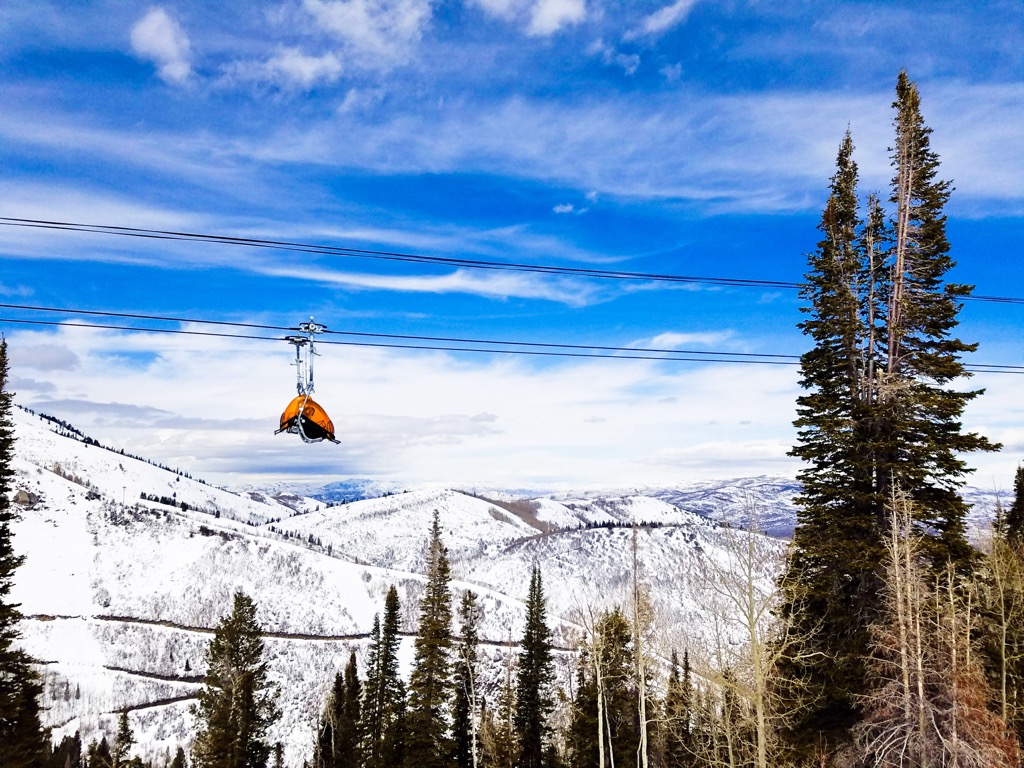
Canyons Village sits beneath the ridges of Murdock's Peak and down from the canyon of Ninety-Nine 90. To visit Park City for the first time without an agenda, park at Canyons Village. A massive free parking lot at the base makes it logistically easier than Park City. It is also the closest lodging to the airport, and accommodation here will be cheaper.
From the parking lot at Canyons Village, it’s a four-lift journey to the top of Ninety-Nine 90. It also takes four lifts to reach Murdock’s bowl. The upper reaches of Canyons cater well to advanced skiers looking to ski off-piste. Since they’re nestled amongst tight canyons, nearly all routes on this side of the mountain are rated blue and black. There are plenty of beginner routes on the Park City side just above town, where the mountains are more open and gently sloped.
Crossing over to Park City is relatively easy from Canyons. There are several variations, but it shouldn’t take more than a few lift rides to be skiing in PC from Canyons or vice versa. I am confident that any skier of intermediate ability and above can ski both Park City and Canyons comfortably. However, beginners should stick to the Park City side.
The Cabriolet Gondola from the parking lot goes to Umbrella Bar and Murdock’s in the upper village. From there is also the top exit of Frostwood Gondola. You can ride Frostwood in any direction without equipment and walk between the lot at the bottom of Cabriolet and the bottom of Frostwood Gondolas in Canyons Village. One option is to park at the bottom of Cabriolet and trek/walk to the lower village to take Frostwood Gondola to The Farm or Red Tail Grill. Access requires a lift pass and is open to anyone, not just those skiing or snowboarding. On foot or trekking, you can ride up or down without equipment any day if you have a lift ticket. Parking is within walking distance from the Umbrella Bar and another lot about halfway up Cabriolet Gondola.
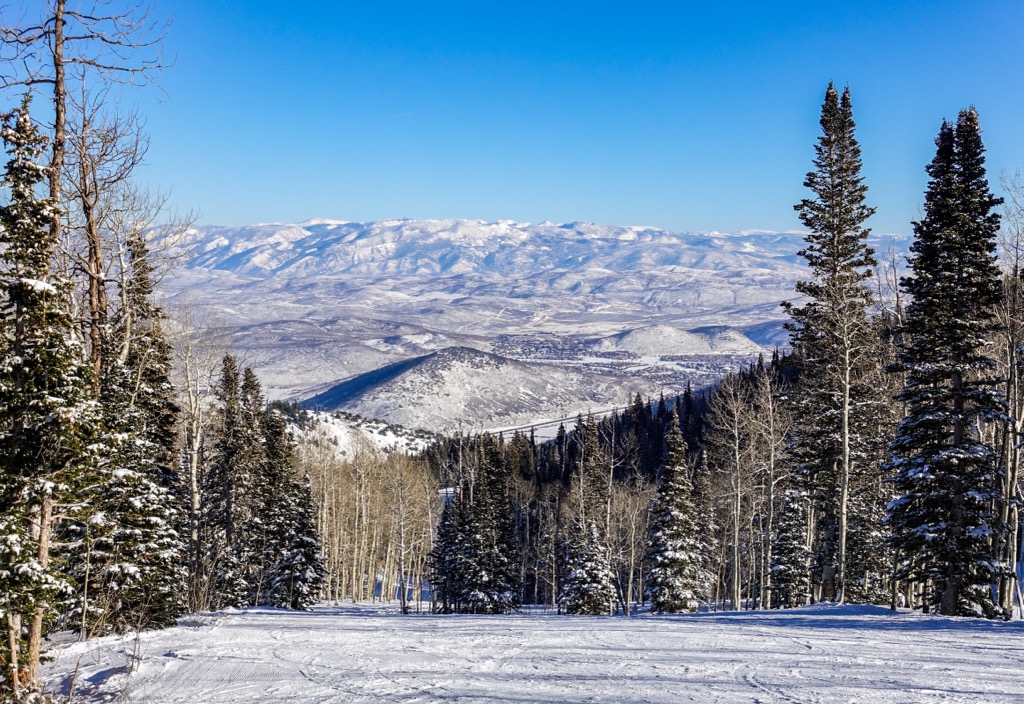
From Park City, the Town Lift (an old, charming triple) will siphon you out of town, while the Partay Express takes you to the same place from the Mountain Village. From here, It’s two or three more lift rides to the top of the mountain. Beginners can go as high as the Bonanza Express and still ski down to town. Those looking to cross over to Canyons will want to hop on the Quicksilver Express Gondola. Jupiter and Jupiter Peak (yes, they are two separate things) offer the best advanced and expert terrain above Park City.
The terrain above Park City, particularly the lower mountain, is much mellower than the Canyons. The terrain is less steep, there are more groomers, and the sun reaches the slopes with a higher frequency. Overall, PCMR still has a favorable aspect for retaining soft, cold snow. About 50 % of the resort is north facing, with the remainder facing west and east. East and west aspects offer morning and afternoon sun, respectively.
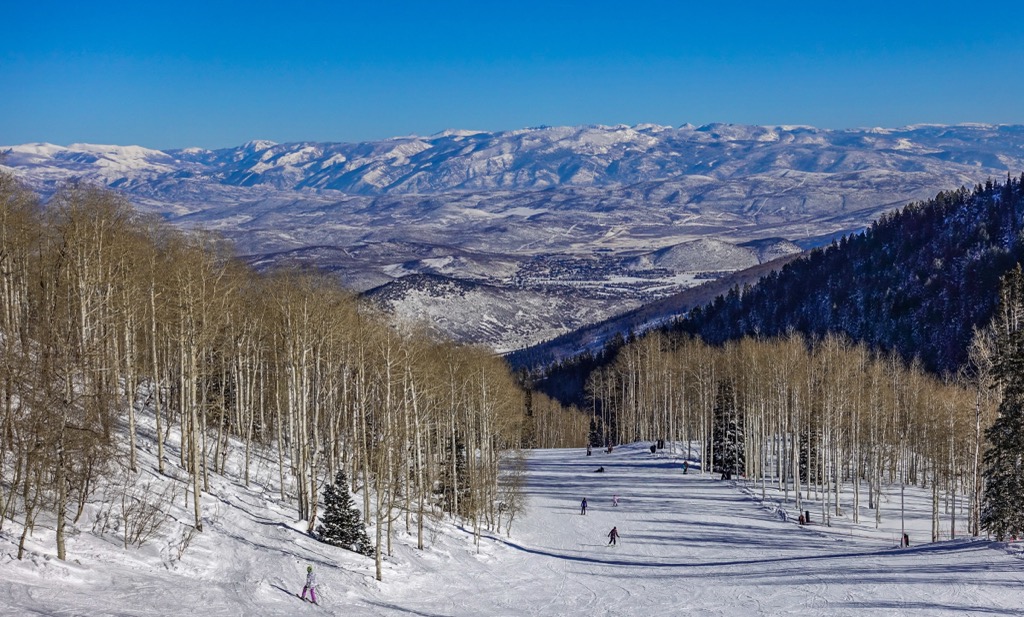
Slopes
Ski lifts
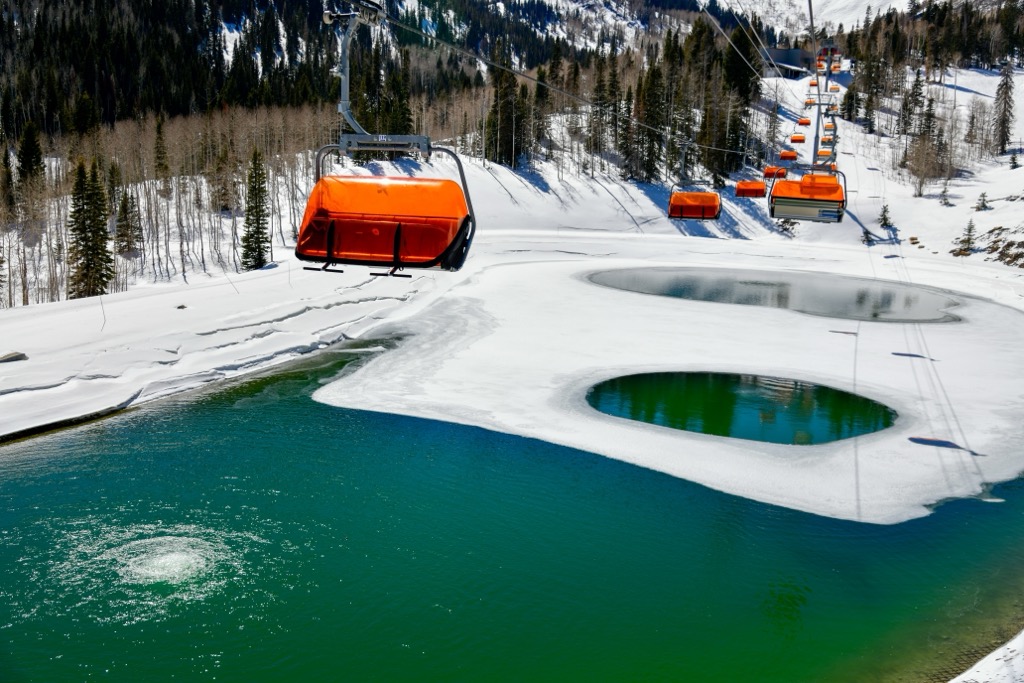
Other features and services
Routes at Park City are marked by four difficulty levels: easy green circles, intermediate blue squares, advanced black diamonds, and elite double black diamonds. Some blue routes are challenging but doable for beginners, while others are quite steep.
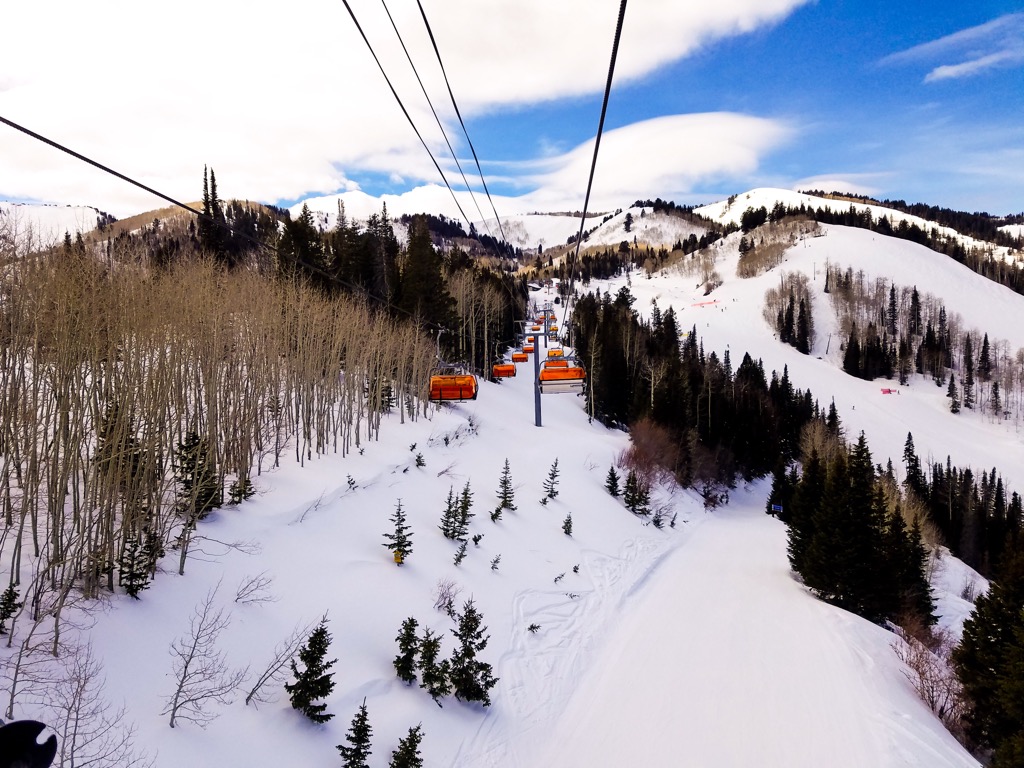
Park City Mountain Resort boasts 324 slopes. Resort-wide, about 50% of the slopes are rated black or double-black diamond, and most of the remainder are blues. There are a handful of beginner slopes, but beginners may get bored after a few days unless they can transition to intermediate-level pistes. Luckily, there is an excellent place for beginners and intermediates down the road called Deer Valley. This luxurious destination is renowned for its wide pistes and spectacular grooming.
To ski the green groomers, park at the Mountain Village Garage and take Crescent Ridge Express, then Bonanza Express to Summit House. On the descent, keep close to the route called Homerun, the longest run at 3.5 miles or 5.6 km. Upper Mainline, Hidden Bear, Alley Cat, and Mellow Moose are other easy green slopes.
Several mini-zones are perfect for intermediates. You could ski in each one of these areas for the whole morning and not touch the same trail. The Silverliode Express accesses several intermediate pistes and a couple of greens and blacks. You can continue down the mountain to the base of the King Con lift, which also offers several intermediate pistes. Or, you can cross over to the Canyons on the Quicksilver Express Gondola.
At the Canyons, check out Dreamscape and Saddleback Express for some stellar introductory tree skiing amongst the small pines near the edge of the treeline. Park City is excellent for folks who are comfortable at an intermediate level. It’s also ideal for those looking to branch into off-piste skiing. There are loads of little passages through the trees, and it’s easy to dip out if things get too tricky.
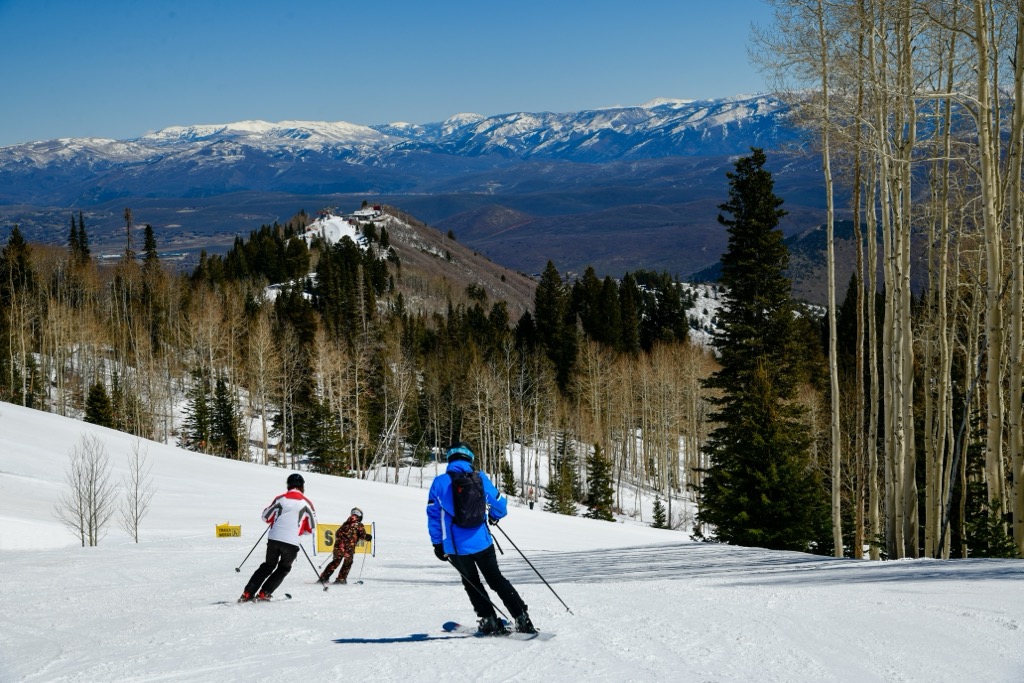
Park City is a heaven for advanced skiers and riders. PCMR is one of Utah's four most challenging resorts, along with Alta, Snowbird, and Snowbasin. The best skiers will want to stick to the upper parts of the resort. Jupiter Peak, Jupiter, Ninety-Nine 90, and Murdock Peak all host excellent off-piste terrain.
While PCMR, especially the Canyons side, offers excellent steeps and powder skiing, there isn’t too much in the way of ‘extreme’ skiing. Only the top of the resort is above the treeline. There aren’t many cliffs or chutes in bounds. The upper peaks are smattered with stunted pine trees, which are great for storm skiing because they provide contrast and visibility.
PCMR also hosts some of the best ‘slackcountry’ skiing in Utah. ‘Slackcountry’ refers to backcountry terrain accessed by the lift system. Remember, there is no avalanche control back here, and rescues need to be initiated by the Forest Service and can be long and arduous. You must only enter this terrain if your group is prepared.
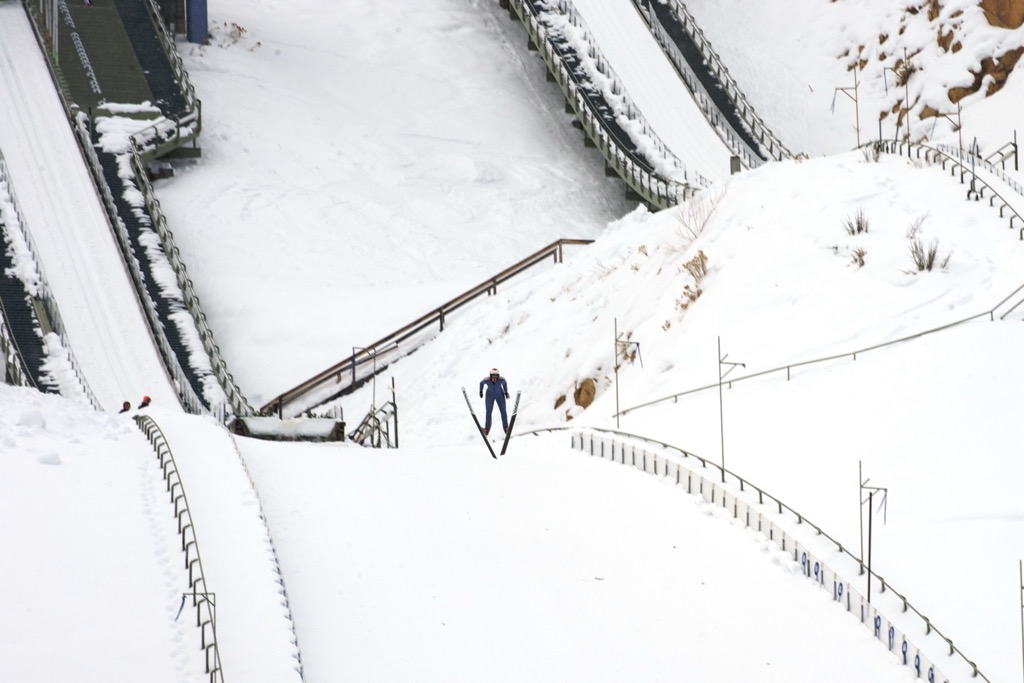
It’s hard to think of anything negative to say about Park City. The town is beautiful, the resort is enormous, the lifts are numerous and fast, and the skiing is incredible for everyone but the weakest skiers. Sounds fantastic, right?
However, there is one major caveat: this guide wouldn’t be honest if I didn’t discuss the situation.
The situation is that Park City and its namesake resort are bursting at the seams with the influx of people since Vail Resort’s takeover in 2014. Vail invested heavily in the ski area's infrastructure, linking Park City and the Canyons to create the largest skiable acreage in the U.S. Locals could now ski both mountains without buying a season path at both. Moreover, the cost of a season pass dropped significantly, and Park City skiers have had access to dozens more mountains every season.
Unfortunately, this development and integration brought massive hoards of people. Park City is so marketed that many tourists have decided they want to ski at this legendary hill instead of the local hill they used to frequent. The Vail Resorts business model is to scale ski areas and centralize skier visits at massive destination resorts instead of local hills. There are fewer ski areas in the U.S., as more and more small hills close yearly, yet places like Breckenridge, Vail, and Park City have become increasingly crowded.
Even if you’re not stuck in massive lift queues all day - and yes, it is possible to avoid them to some extent - the tranquility of Park City has diminished in recent years. For example, you must expect a morning bottleneck at the base area, crowds of tourists on the piste, and traffic around trail junctions. Solitude is more elusive than it once was - other people are always around you.
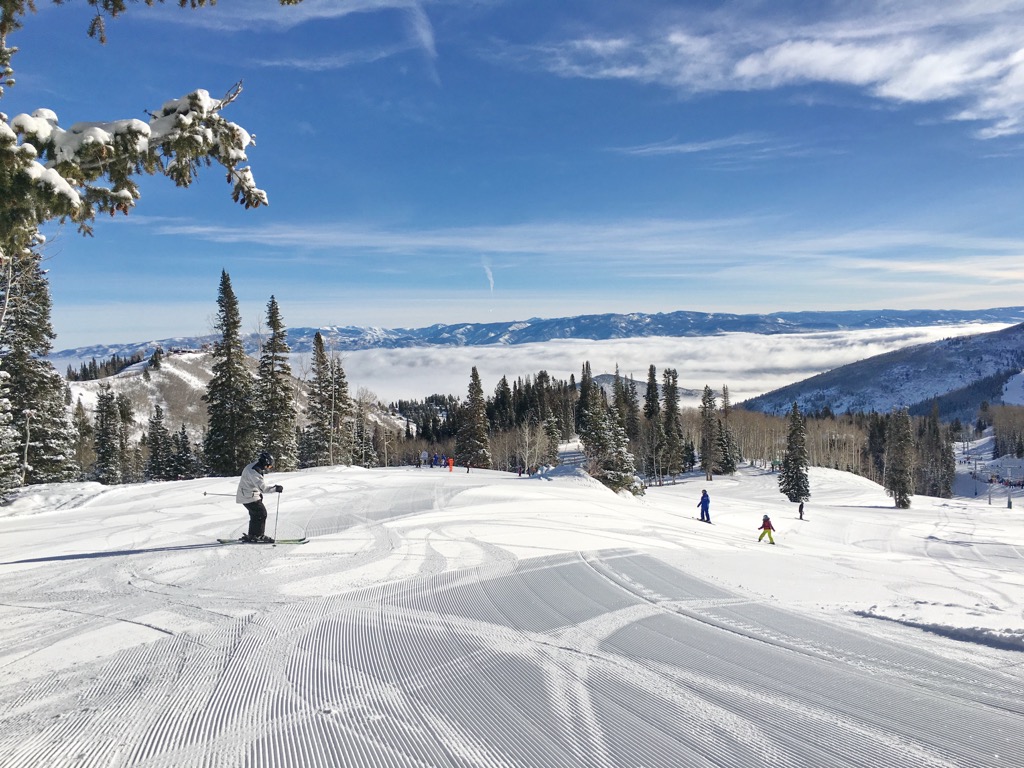
Here are some tips to maximize your skiing:
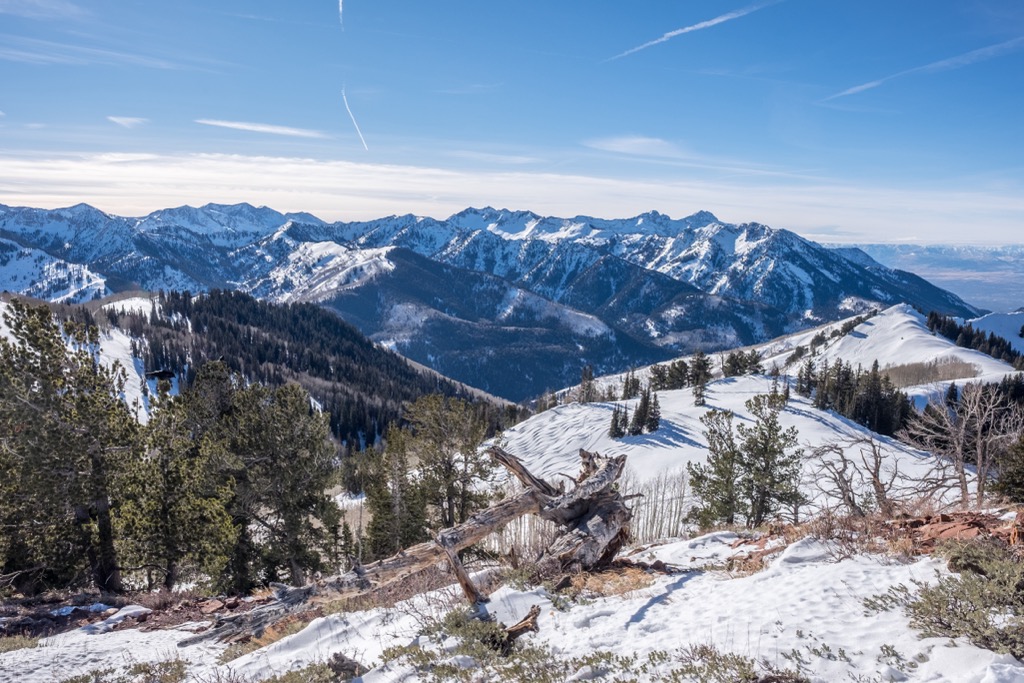
Basin Recreation and Round Valley both offer about 15 mi (25 km) of trails. Some are groomed, while others are ungroomed, steep, and technical. These are multi-use trails, so they also serve as a great place to snowshoe.
The White Pine Nordic Center is Park City’s fee-based groomed cross-country ski park, with over 12 mi (20 km) of trails. The center offers tours, lessons, rentals, and even ski tuning. Check their website for additional information on the services provided and pass prices.
Park City sits within the heart of the Wasatch Mountains, one of the great ranges of the Western U.S. Needless to say, there is a lifetime of backcountry skiing within a short distance. I’ll discuss two of the most well-known zones.
Guardsman Pass: Guardsman is the perfect tour to experience the joys of skiing Utah’s legendary dry powder without a huge commitment. Depending on your fitness, the pass takes about an hour to skin up, and there are plenty of options for the descent. The terrain is primarily glades - there isn’t too much above alpine here. Check out this guide for a visual reference to the area.
Ninety-Nine 90: Besides what’s offered ‘inbounds,’ Park City’s lifts provide excellent access to backcountry terrain. The most famous is Square Top Mountain. The backside of Square Top is steep and fall-line, peppered with cliffs, chutes, and small trees.
It’s a powder skier’s dream but also extremely hazardous. Since folks began skiing back here, this zone has been host to almost 20 avalanche deaths. In 2021, Park City permanently closed the backcountry gate accessing Square Top. You can still access the terrain from a different gate, but it requires more hiking. The resort hopes the more convoluted approach will dissuade inexperienced skiers and riders from getting caught back here.
Prospective backcountry skiers and riders need to know this zone exists to understand the area's potential and continue to improve themselves. However, this is serious terrain, and your group must have the requisite knowledge to enjoy this beautiful place.
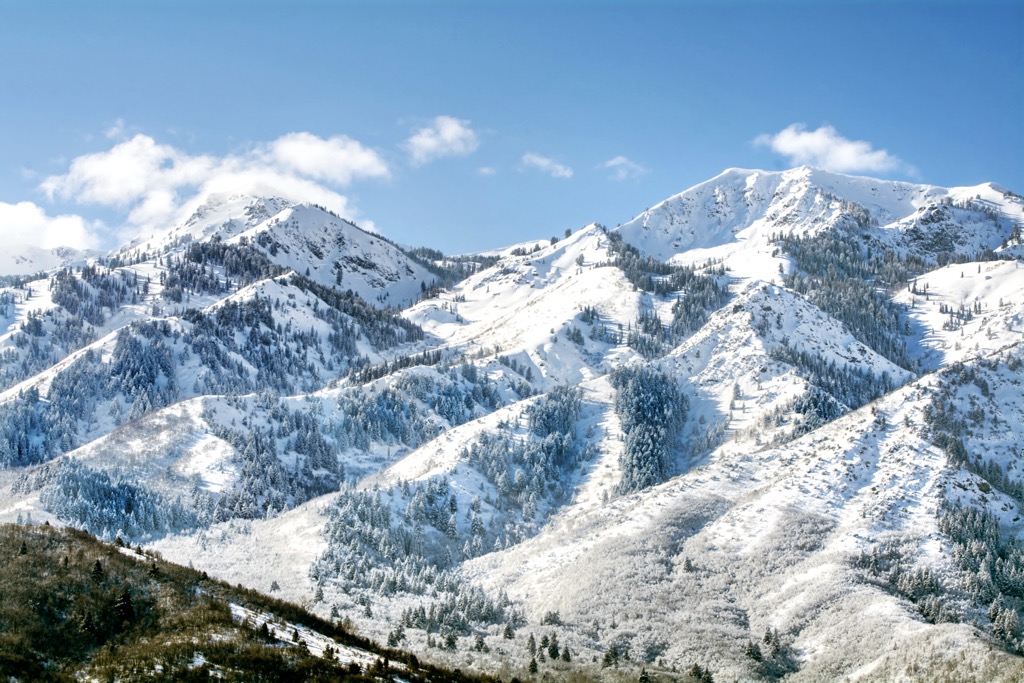
Ski passes at PCMR are cheap and expensive at the same time. Prices are extraordinarily high for single-day access, but the season pass is among the best value in the ski industry. Vail Resorts, the company that runs PCMR, uses this price discrimination model to extract money from folks who don’t care about the numbers. At the same time, the season pass, which accesses more than three dozen different resorts, caters well to locals and passionate skiers.
Day Passes: PCMR uses a scaled system for day passes, so prices differ depending on weekends and holidays. However, a day pass will run you between $200-250, even if you buy online, and same-day purchases are $269. The price sounds ridiculous, but it is designed for people with so much money that they don’t care about the cost of anything. For everybody else, the Epic Pass is a genuinely epic option for access to Park City and dozens of other mountains.
Epic Pass: The Epic Pass is Vail Resorts mega pass, offering access to dozens of mountains worldwide. With the complete Epic Pass ($909 when purchased early), you get unlimited access to PCMR. The Local’s pass ($676 purchased early) gives full-season access with blackout dates during the U.S. holidays. Vail Resorts also offers the Epic Pass in 1-7 day packages for those with limited time to ski. The only downside is that you must buy early and plan to ski the following season for the best price. As we all know (Vail Resorts especially), plans don’t always work out. Still, this is the best option for anybody looking to come to Park City for any amount of time. All the information is available at Epic Pass’s website here.
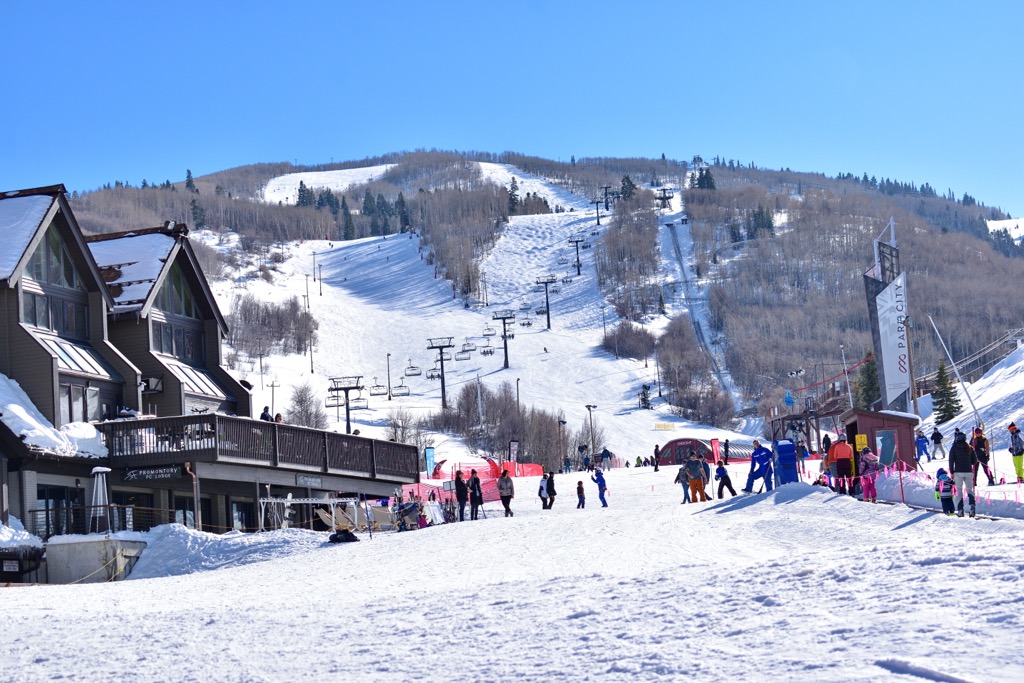
Park City Visitor Information Center
1794 Olympic Pkwy, Park City, UT 84098-6387
+1 435 658 9616
https://www.visitparkcity.com/
PCMR hosts many on-mountain dining establishments. The advantage of these restaurants is the convenience of not going down to the base area, where it may take a long time to get back up the mountain. The disadvantage is that food is costly, and many people compete for limited space. Dining reservations are accepted at Summit House, Viking Yurt, Mid-Mountain Lodge, Cloud Dine, Miner’s Camp, Snowden Sleigh Company, Legacy Lounge, Legends, Tombstone Bbq, Red Pine Lodge, Lookout Cabin, Sun Lodge, Murdock's, Umbrella Bar, Red Tail Grill, and The Farm. You may want to make reservations in advance, especially during the holidays.
Cloud Dine serves donuts that are a hit. However, you must be at least an intermediate skier to access this restaurant.
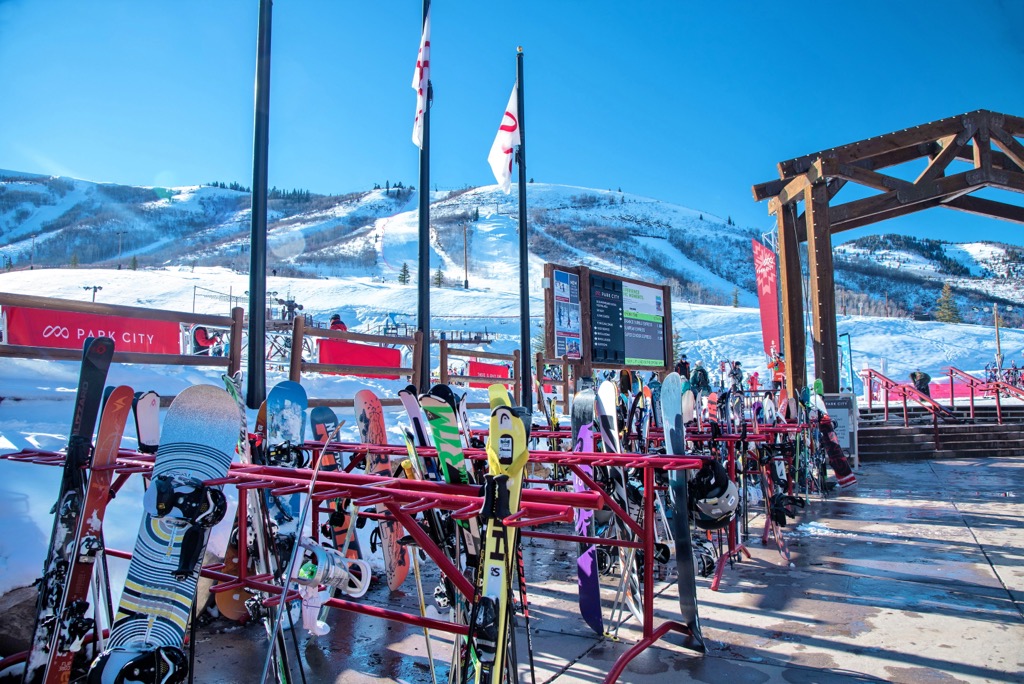
None of the restaurants on the mountain are particularly good, especially if your equation for ‘good’ includes price. All the best restaurants are in town. Nothing in Park City is cheap, but at least the restaurants in town attempt to be culinarily inspiring. I’m not sure what it is about Utah, but Salt Lake City also has outstanding restaurants for a city of its size. I guess if you can’t drink, you have to eat well. Here are some suggestions in town:
Nosh - Israeli cuisine.
Bangkok Thai on Main - Thai establishment since 1994.
Hana Ramen Bar - Handcrafted ramen in the mountains. Need I say more?
Hearth & Hill - American food can be interesting, too.
That’s just a smattering of Park City’s culinary delights. Park City has been famous with a well-to-do, sophisticated crowd for decades due to the film festivals and the general beauty of the town and mountains. The demand and access to excellent ingredients in SLC make Park City one of the best food scenes of any ski town in the U.S.
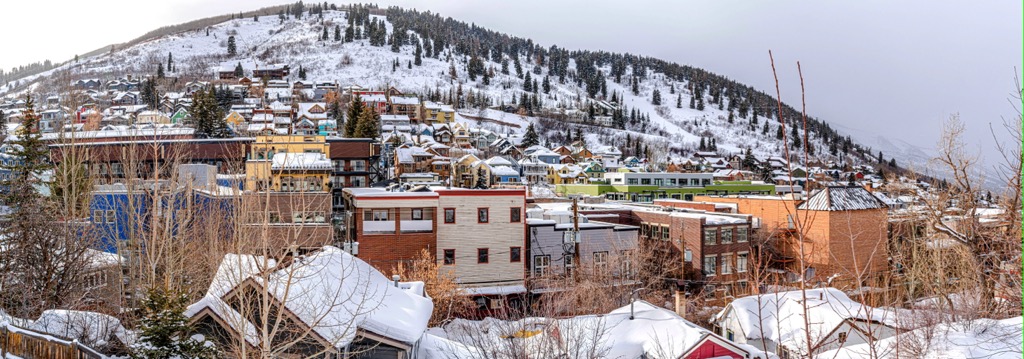
Between Park City, Mountain Village, and the Canyons village, there is no shortage of accommodation within a stone’s throw of access to the lifts at PCMR. I’ve discussed the advantages of each site already. Park City is more charming and historical but tighter, busier, and generally more hectic. Canyons and Mountain Village are more spread out and logistically easier. They are also cheaper, but if you don’t like miles of tacky development, you might not enjoy it here.
I don’t have much insight into the value of particular hotels and condos, and all this information is readily available online. The area hosts scores of hotels and condos in different price brackets. There are hundreds more options on Airbnb and VRBO.
Park City is a happening place. PCMR and Deer Valley hosted many alpine skiing events during the 2002 Winter Olympics (Salt Lake City). There are numerous races and freestyle competitions in the valley every winter.
However, the most significant event in Park City each winter is the celebrated Sundance Film Festival, which takes place in January. The festival lasts about ten days, attracting actors, directors, celebrities, and cinephiles from around the world. Skiers who enjoy film may enjoy staying in town during the festival, but those uninterested in all things Hollywood may be frustrated by the hoards of unconditioned city folk in the mountains.
If you are a skier who likes film but cannot swing a trip during the festival, Park City Film hosts events throughout the winter. Après Pendry hosts live music on Fridays and Sundays, and possibly more. Wasatch Brewing Company also hosts live music and drinks after the slopes empty out. Moreover, there is a Spring Concert Series in the Canyons village. If you like art, there is a gallery walk on the last Friday of the month.
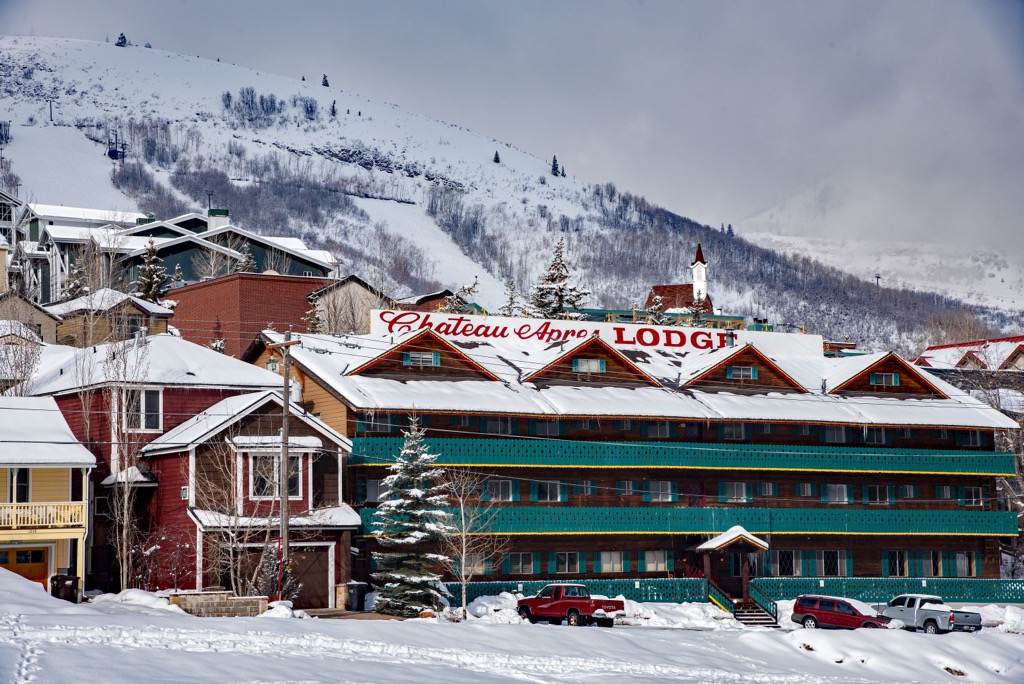
Deer Valley Resort, also in Park City, is known for its well-prepared pistes and luxurious clientele. Skiing is an elite sport, but Deer Valley takes it to the next level. Skiers will find immaculately prepared pistes coupled with a lift system that handles over 50,000 skiers per hour. Deer Valley limits ticketing at 7,500 skiers per day, so visitors will virtually never encounter a lift line. Uniformed mountain staff refer to you as a ‘guest,’ tissues are provided at lift stations, and an overnight ski check service is complimentary.
Snowboarders are not allowed at this resort, a regulation that has long been a source of contention. However, there’s no real reason snowboarders would want to ride here - it’s mostly just groomer cruising at Deer Valley. Spend the night at a luxury hotel and wake up to the finest corduroy you’ve felt underfoot at this uniquely clean-cut ski area.
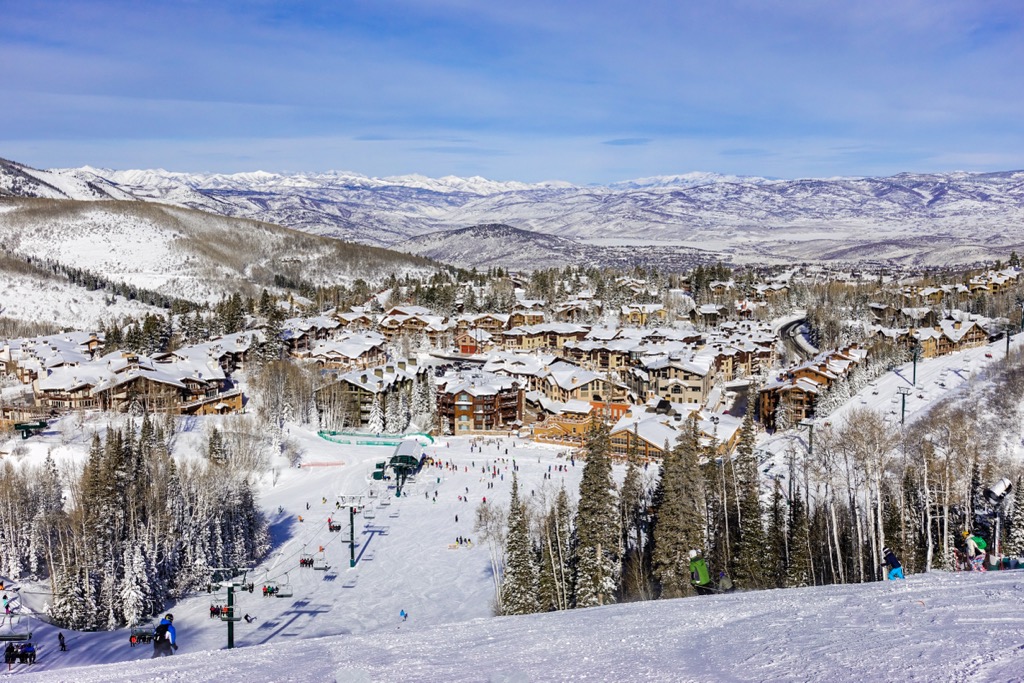
Brighton is so close to PCMR that it would be a crime not to mention it in this section, even though it takes over an hour to drive there from Park City. If your fitness is good enough, you could ski tour faster up Guardsman Pass or hop over from Jupiter Peak. The resort is just across the ridge from PCMR.
Brighton is a cozy resort with fun off-piste skiing in the snow mecca known as Big Cottonwood Canyon. They average over 500 inches of snow a year - the resort is popular with boarders, perhaps because it was too deep for skiers before the advent of fat skis (it’s not as steep as Alta and Snowbird). At 1,050 acres (425 ha), it is less than 1/7th the size of PCMR.
Still, there are fewer people and plenty of fun terrain. Brighton also offers 200 acres (82 ha) of night skiing. Unfortunately, it is not on the Epic Pass but the rival Ikon Pass, so you cannot ski here for free.
